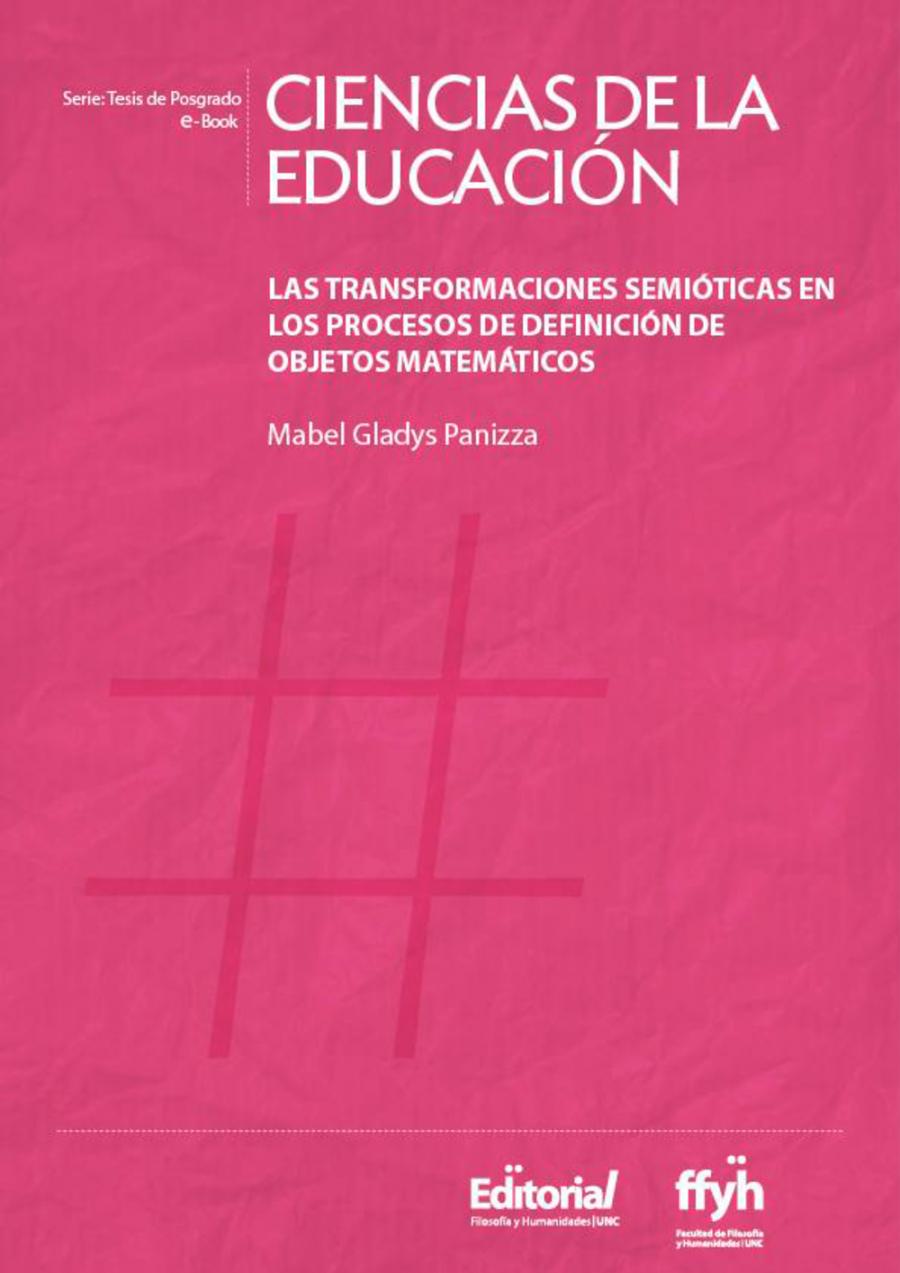Semiotic transformations in the processes of defining mathematical objects
Keywords:
mathematics, mathematical objects, semioticsSynopsis
This book presents the results of the author's doctoral thesis, carried out using a semiotic-linguistic approach under the supervision of Raymond Duval and consisting of two parts with different methodological characteristics.
The first part consists of an empirical study conducted in the fields of algebra, geometry, and mathematical analysis. Its purpose is to study how the operations that constitute the processes of defining mathematical objects are manifested in students' procedures. Among these operations, the author identifies those of observation, recognition, description, and naming.
The study establishes that students do not spontaneously conceive representative examples of a mathematical object, which is why the aforementioned operations are performed on a limited domain of instances and on few representations that bear the mark of particularity. The study also suggests that the symbolic or natural language descriptions that students make of the objects observed are based on local associations and are generally not adequate—either by excess or by default—for the objects they are trying to describe. These and other phenomena related to the categorization and naming of objects motivated the need to identify didactic conditions for an entry into the relevant definition from a mathematical point of view, which is the subject of the second part of the thesis.
The second part consists of a semiotic analysis of mathematical tasks that favor the expansion of students' field of familiar objects, the development of the ability to formulate verbal and symbolic descriptions appropriate to the objects they seek to characterize, and the understanding and use of explicitly formulated definitions. The cognitive and didactic variables identified promote construction and deconstruction through observation and description of new objects by means of tasks that require the identification of semantic categories and block discursive operations based on local associations that capture properties typical of representations of few examples.
The different types of The different types of expression substitution identified ensure discursive progress through a change of meaning and referential invariance, enabling access to and control of meanings and the operability of a definition in validation processes.

Downloads
Published
Categories
License

This work is licensed under a Creative Commons Attribution-NonCommercial-ShareAlike 4.0 International License.


